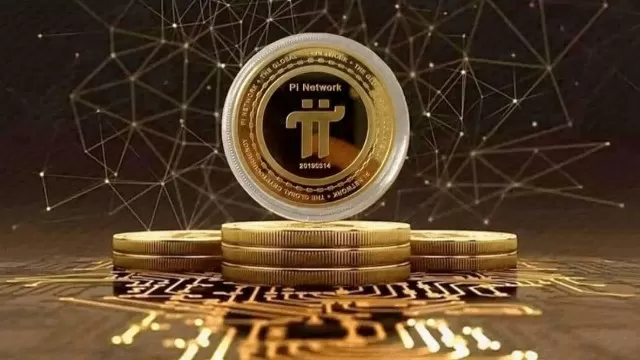Where & How To Sell Pi Coin to Make Real Money? A Step-by-Step Guide in 2025

Since its launch in 2019, Pi Network has drawn millions of users by promising a simple way to mine cryptocurrency straight from your smartphone. Fast forward to 2025, and that promise is finally becoming a reality. With the launch of Pi Network’s Open Mainnet, users can now move their Pi coins out of the app and into real-world crypto markets.
The question on everyone’s mind is: How do you sell Pi Coin and turn it into real money?
This guide breaks it all down. We’ll cover how to prepare your Pi for trading, what steps you need to take to cash out, and which platforms make the process the easiest. Whether you’ve mined a few hundred Pi or you’ve been collecting since day one, this is your complete, no-nonsense guide to selling Pi Coin in 2025.
What Is Pi Coin?
Pi Coin is the native cryptocurrency of the Pi Network, a blockchain project that set out to make crypto mining accessible to everyday people. Unlike Bitcoin or Ethereum, which require powerful hardware and high electricity costs, Pi allowed users to mine coins from their phones with no technical knowledge required.
The platform was created by a group of Stanford graduates and built around a mobile-first design. It uses the Stellar Consensus Protocol, which is far more energy-efficient than traditional proof-of-work models.
For years, Pi was in a closed ecosystem. Users could mine and accumulate coins, but they couldn’t withdraw, trade, or spend them externally. That all changed in 2025 with the launch of the Open Mainnet, enabling Pi holders to finally transfer their coins out of the Pi app and into real-world wallets and exchanges.
Can You Sell Pi Coin for Real Money in 2025?
Yes. You can now sell Pi Coin for real money, but there are a few important conditions.
First, not all Pi is tradable. If your coins are still on the enclosed testnet or if you haven’t completed identity verification (KYC), you won’t be able to sell yet. Only Pi that has been migrated to the mainnet and linked to a verified account can be traded on supported exchanges.
Second, Pi Coin isn’t listed on every exchange. You won’t find it on Coinbase or Binance just yet. However, it is listed on several well-established crypto platforms like MEXC, Gate.io, OKX, and Bitget. These are the exchanges where real, mainnet Pi is being traded against stablecoins like USDT.
So while the path to cashing out your Pi is very real, you’ll need to follow a few key steps to get there.
How to Sell Pi Coin in 2025: Step-by-Step Guide
Step 1: Complete KYC Verification in the Pi Network App
Before anything else, you need to verify your identity through the Pi Network app. This process, known as Know Your Customer (KYC), is mandatory to prevent fraud and ensure regulatory compliance.
To complete KYC:
- Open the Pi Network app
- Go to the Mainnet Checklist
- Select the KYC option and follow the steps
- Upload a government-issued ID
- Perform a liveness check using your phone’s camera
Once your KYC is approved, you’re eligible to move your Pi to the mainnet and begin trading.
Step 2: Migrate Your Pi Coins to the Mainnet Wallet
Only migrated Pi Coins can be sent to external wallets or exchanges. If your coins are still on the enclosed testnet, they’re not yet eligible for trade.
To migrate:
- In the app, navigate to the Mainnet Checklist again
- Select “Mainnet Transfer”
- Review the migration details
- Confirm your wallet address
- Approve the transfer
After migration, your Pi will be stored in your Pi Mainnet Wallet and ready to be moved to an exchange.
Step 3: Choose a Supported Exchange
Several exchanges now support real Pi trading. The most prominent options in mid-2025 are:
- MEXC
- Gate.io
- OKX
- Bitget
Among these, MEXC has emerged as the top choice, especially for Pi holders looking for a straightforward, fast, and secure trading experience. MEXC supports the most in-demand Pi trading pair: PI to USDT. Liquidity varies throughout the day, but MEXC typically maintains solid volume, making it easier to execute trades without significant price slippage.
Step 4: Transfer Pi from Your Wallet to the Exchange
Once you have an account on your chosen exchange:
- Log into your exchange dashboard
- Locate your Pi deposit address (usually found in the “Deposit” section)
- Go back to your Pi Wallet
- Enter the exchange’s deposit address and send your Pi
It may take a few minutes to a couple of hours for the transfer to complete, depending on network traffic.
Step 5: Sell Pi for USDT or Other Cryptocurrencies
After your Pi appears in your exchange account, you can trade it for USDT or another supported pair.
To sell:
- Navigate to the Spot Trading section
- Select the PI/USDT trading pair
- Choose “Market Order” for instant execution or “Limit Order” if you want to set a specific price
- Enter the amount of Pi you want to sell
- Confirm the transaction
Once the trade is completed, you’ll now hold USDT (a stablecoin pegged to the US dollar) in your exchange wallet.
Step 6: Withdraw Your Profits
To turn USDT into actual cash, you have a few options:
- Use the exchange’s fiat withdrawal method (bank transfer, debit card, etc.)
- Transfer USDT to another platform like Binance, Coinbase, or a crypto wallet that supports fiat off-ramping
- Convert USDT to your local currency using a third-party app or payment processor
Make sure to check for withdrawal fees, processing times, and minimum limits before finalizing the transaction.
How Much Can You Make Selling Pi Coin?
That depends on a few factors:
- The current market
- How much Pi you’ve mined and migrated
- The liquidity and volume on your chosen exchange
In mid-2025, Pi trading volumes have seen sharp fluctuations. For example, in May, volume hit $5.4 billion at its peak but dropped below $1 billion within weeks. This kind of volatility means prices can vary widely from day to day and across platforms.
If you’ve mined 2,000 Pi and the average trading price is $10 per coin, that’s $20,000 in value. But if prices dip to $3, the total would only be $6,000. Timing matters.
To maximize profits:
- Monitor Pi price trends and volume before selling
- Avoid panic selling during market dips
- Consider selling in stages rather than all at once
Is Selling Pi Safe?
Yes-if you follow verified channels and avoid shortcuts.
Here’s how to stay safe:
- Use reputable exchanges like MEXC or OKX
- Never give out your private keys or wallet credentials
- Watch out for impersonators, fake apps, or third-party buyers
- Always enable two-factor authentication
- Confirm that you are trading mainnet Pi, not testnet tokens or IOUs
Avoid sites or individuals offering to “buy your Pi for cash” outside of official exchanges. These are often scams.
Conclusion
Pi Network has reached a major milestone. After years of speculation, holders can finally cash out their Pi Coins and turn them into real money. But it’s not automatic. You need to verify your identity, migrate your coins to the mainnet, use a supported exchange, and complete the proper steps to sell safely.
So if you’ve been mining Pi on your phone for years and wondering when it would pay off-the answer is: right now.
Take the right steps, stay informed, and you can finally turn your digital mining into tangible returns.
Disclaimer
The content provided on this website is for informational and educational purposes only. We do not promote, endorse, or encourage any form of illegal betting or gambling. Readers are advised to check the legal status of betting and gambling in their respective jurisdictions before engaging in any activities. It may be legal in certain regions, but it is the your responsibility to ensure compliance with local laws. We are not liable for any legal or financial consequences arising from the use of this information.











Give Your Feedback